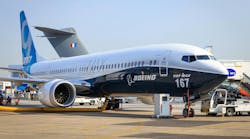In January, passengers, crew and the public were stunned by the latest high-profile incident involving a Boeing 737 MAX-9 jet. A door plug blew out during an Alaska Airlines at 16,000 feet. Thankfully (and perhaps luckily), nobody was killed in the incident.
In the aftermath, the general public might ask, “Who screwed up?” Better questions include, “What might be going wrong with Boeing’s processes and operations?” We should also ask, “What’s wrong with Boeing’s culture and leadership?”
Are these new, isolated problems with new, local causes? It seems not.
Immediately after the incident, inspections of the temporarily-grounded MAX-9s led to the discovery of loose bolts on multiple jets in the United Airlines fleet. The problem not being isolated to a single plane makes it even more clear it’s a systemic problem — certainly not the fault of any individual mechanic or team.
It was first assumed that the Alaska Airlines plane also had loose bolts, but an initial NTSB report confirmed what had started as an internet rumor: The four bolts in question had not been re-installed. They were missing altogether, presumedly left on a workbench or ending up in the trash.
Why?
The door plug, originally assembled into the fuselage by supplier Spirit AeroSystems, was removed at a Boeing facility in Washington and had to be reinstalled.
Why?
Boeing and Spirit employees had to rework the fuselage due to riveting defects created during Spirit’s manufacturing process in Kansas. Spirit should be asking why those defects occurred and how they can prevent them from happening again. But the responsibility for the incident doesn’t end with Spirit.





